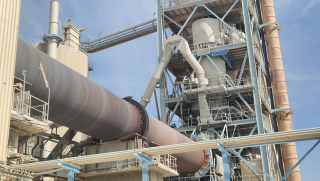As cement consumption in the Nordic countries is comparatively low compared to its European peers, most local producers ship significant quantities of their output to overseas markets. However, domestic cement companies supplying the Norwegian, Estonian and Latvian markets saw sales pick up in 2012 and can look forward to further growth ahead. Meanwhile, in other Nordic countries, markets remained subdued last year and a recovery appears a little way off.
Sweden, Norway and Finland are the biggest Nordic cement markets, with Denmark a distant fourth. The three Baltic countries of Lithuania, Latvia and Estonia are modest in terms of population and have a low per capita consumption. Norway, helped by its oil and gas wealth, has by far the highest per capita consumption rate at 373kg. The abundance of wood in all Nordic countries, other than Denmark, has helped keep cement consumption low by European standards. With the exception of Finland, all countries are important exporters of cementitious products.
The combined population of the seven states amounts to 32m. Sweden has the most inhabitants with 9.59m, followed by Denmark with 5.61m. Finland and Norway have slightly smaller populations, 5.44m and 5.08m, respectively. At present, each country has a single domestic cement producer, but this is set to change in 2015 as Estonia brings a new clinker grinding centre on-stream. HeidelbergCement is the sole cement producer in Sweden, Norway and Estonia. In Finland the only producer is CRH, while in Denmark it is Cementir and in Latvia, Cemex. In Lithuania Akménes Cement is an independent producer in which Mexico-based Cemex holds a minority stake.
